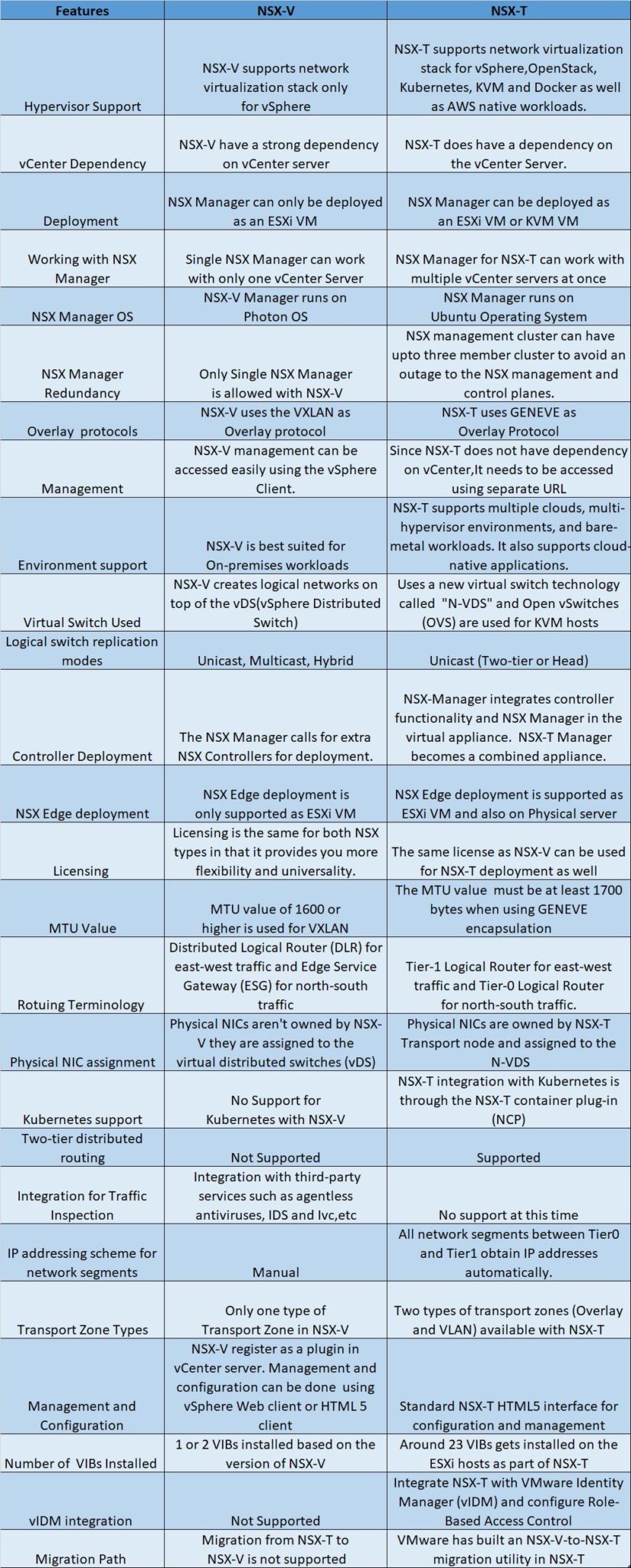Software-defined networking (SDN) is an approach to networking that uses software-based controllers or application programming interfaces (APIs) to direct traffic on the network and communicate with the underlying hardware infrastructure. This is different from traditional networks, which use dedicated hardware devices (routers and switches) to control network traffic. SDN can create and control a virtual network or control a traditional hardware network with software. While network virtualization enables the ability to segment different virtual networks within one physical network or connects devices on different physical networks into one virtual network, software-defined networking enables a new way of controlling the routing of data packets through a centralized server.
VMware’s NSX is a software-defined networking solution that delivers virtualized networking and security entirely in software. When it comes to VMware NSX, we have now two offering NSX-V (NSX for vSphere) and NSX-T (NSX Transformers). Both of them have a great capability and feature sets in the SDN space. We need to understand the difference between VMware NSX-V and NSX-T to implement it for the right uses cases and deployment scenarios. This article will help you to understand the key difference between VMware NSX-V and NSX-T.
I hope the above comparison table of various features will help you to understand the difference between VMware NSX-V and NSX-T. Thanks for reading!!!. I hope this is informative for you. Thanks for Reading!!!. Be social and share it on social media, if you feel worth sharing it.


